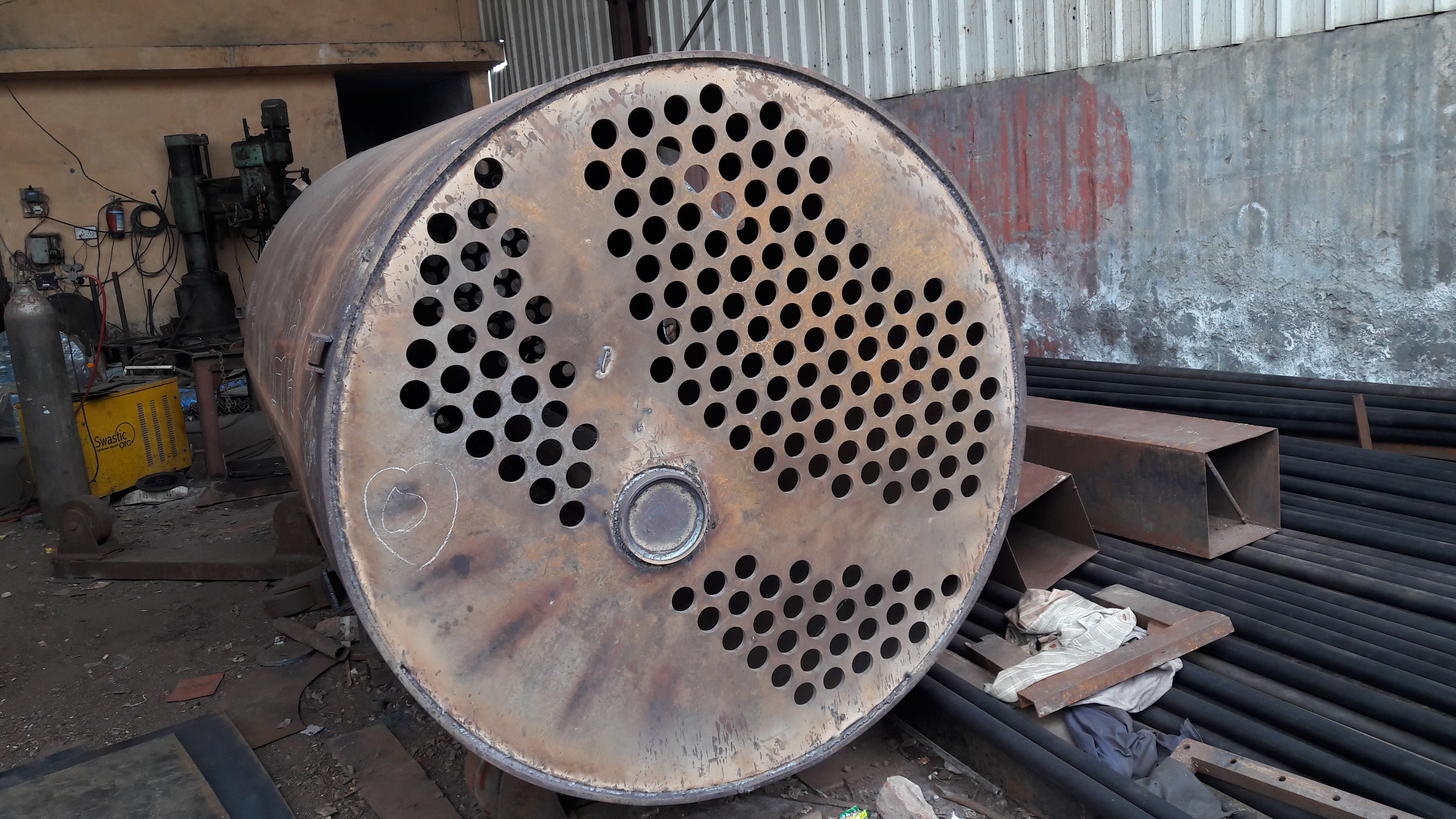A fire-tube boiler differs from a water tube boiler, and is a type of boiler in which hot gases from a fire pass through one or more tubes running through a sealed container of water. The heat of the gases is transferred through the walls of the tubes by thermal conduction, heating the water and ultimately creating steam.
The fire-tube boiler developed as the third of the four major historical types of boilers: low-pressure tank or “haystack” boilers, flued boilers with one or two large flues, fire-tube boilers with many small tubes, and high-pressure water-tube boilers. Their advantage over flued boilers with a single large flue is that the many small tubes offer far greater heating surface area for the same overall boiler volume. The general construction is as a tank of water penetrated by tubes that carry the hot flue gases from the fire. The tank is usually cylindrical for the most part—being the strongest practical shape for a pressurized container—and this cylindrical tank may be either horizontal or vertical.
This type of boiler was used on virtually all steam locomotives in the horizontal “locomotive” form. This has a cylindrical barrel containing the fire tubes, but also has an extension at one end to house the “firebox”. This firebox has an open base to provide a large grate area and often extends beyond the cylindrical barrel to form a rectangular or tapered enclosure. The horizontal fire-tube boiler is also typical of marine applications, using the Scotch boiler. Vertical boilers have also been built of the multiple fire-tube type, although these are comparatively rare: most vertical boilers were either flued, or with cross water-tubes.
A water tube boiler is a type of boiler in which water circulates in tubes heated externally by the fire. Fuel is burned inside the furnace, creating hot gas which heats water in the steam-generating tubes. In smaller water tube boilers, additional generating tubes are separate in the furnace of the water tube boiler, while larger utility boilers rely on the water-filled tubes that make up the walls of the furnace to generate steam.
The heated water then rises into the steam drum. Here, saturated steam is drawn off the top of the drum. In some services, the steam will re-enter the furnace through a super heater to become superheated. Superheated steam is defined as steam that is heated above the boiling point at a given pressure. Superheated steam is a dry gas and therefore used to drive turbines, since water droplets can severely damage turbine blades.

In the water tube boiler cool water at the bottom of the steam drum returns to the feedwater drum via large-bore ‘downcomer tubes’, where it pre-heats the feedwater supply. (In ‘large utility boilers’, the feedwater is supplied to the steam drum and the downcomers supply water to the bottom of the waterwalls). To increase economy of the boiler, exhaust gases are also used to pre-heat the air blown into the furnace and warm the feedwater supply.
The older fire-tube boiler design – in which the water surrounds the heat source and the gases from combustion pass through tubes through the water space – is a much weaker structure and is rarely used for pressures above 350 psi (2.4 MPa). A significant advantage of the water tube boiler is that there is less chance of a catastrophic failure: there is not a large volume of water in the boiler nor are there large mechanical elements subject to failure.









